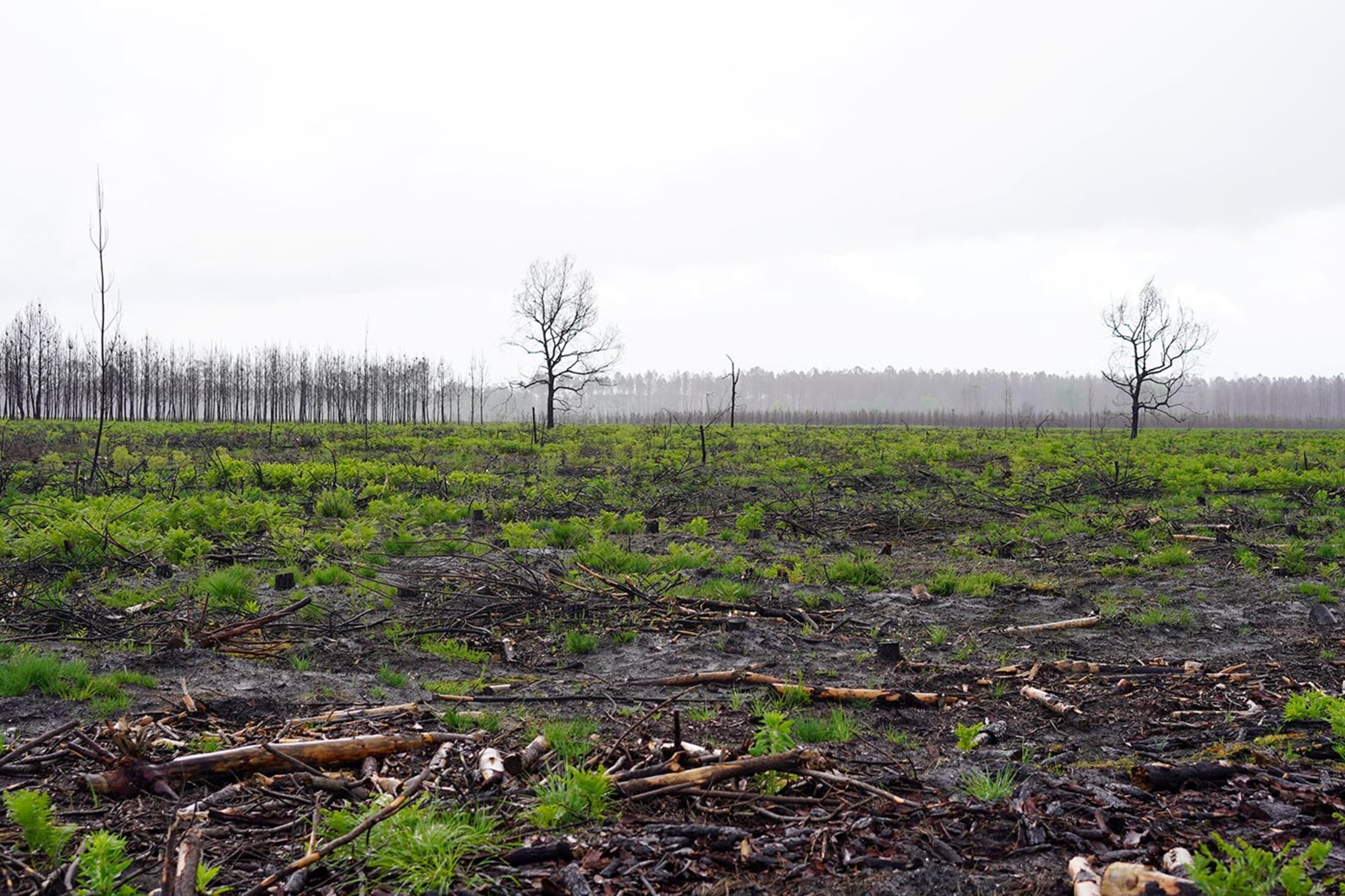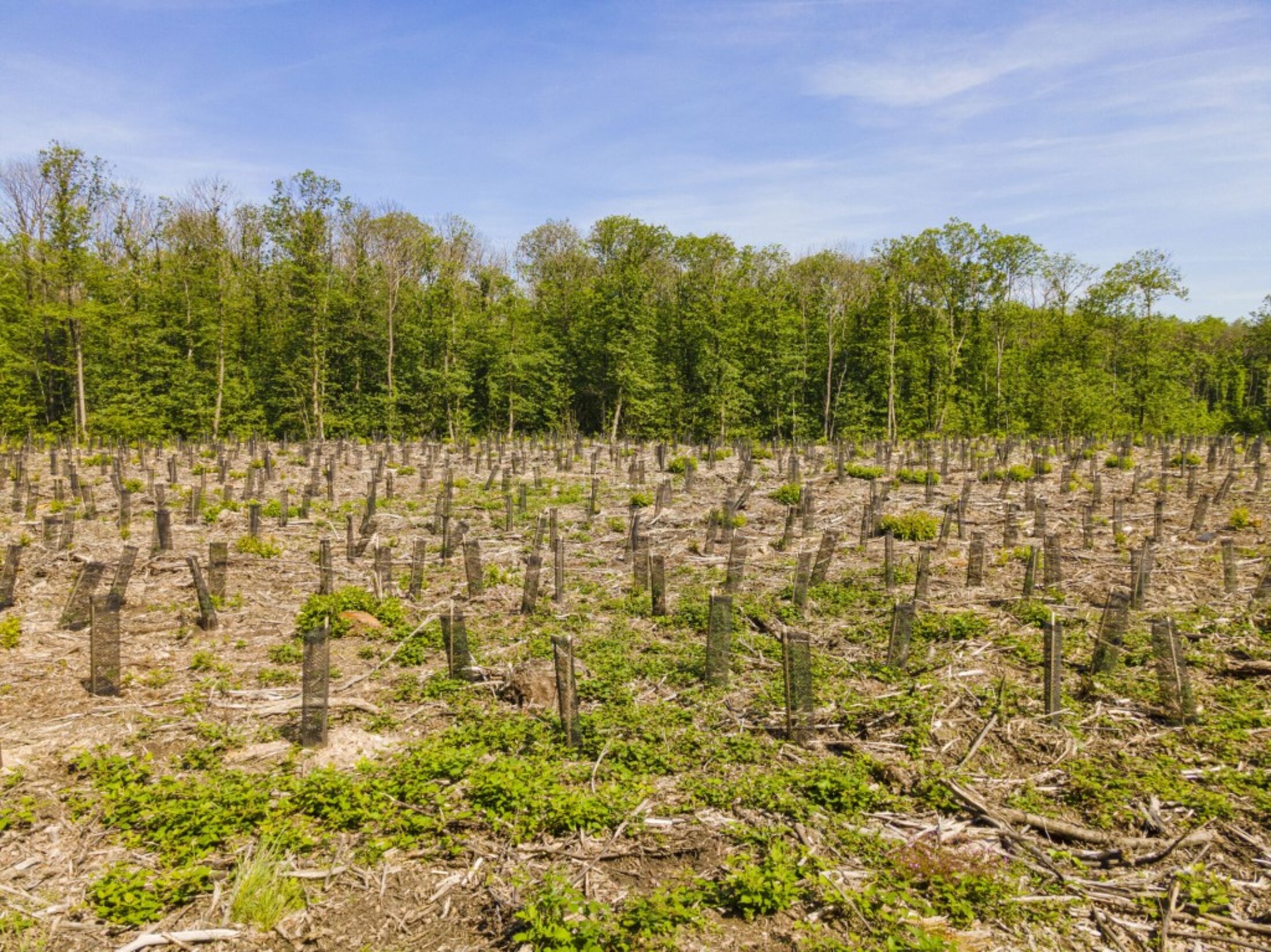It was after last year’s massive wildfires in the Landes département (county) in south-west France that Emmanuel Macron announced a project for the planting of one billion trees around the country, spread over a ten-year period. It has become the main plank of a national programme for the renewal of French forested land, which the government is preparing in the form of draft legislation to be submitted before Parliament this autumn.
At the end of July this year, agriculture minister Marc Fesneau outlined the major points of the ambitious programme, following a study by the country’s High Council for Forests and Timber (CSFB), a body that regroups relevant ministries, public agencies, politicians, representatives of the sector and others from civil society.
The plan to plant a billion trees over ten years represents an average yearly planting of 100 million saplings, which would involve bedding a surface area equivalent to ten times that of Paris. The CSFB estimates the cost of the programme would total between 8-10 billion euros.
The main objective, the CSFB report sets out, is to combine “the necessity to produce more timber” with that of enlarging the carbon sink of French forest land, which is a main plank in the national strategy of reaching carbon neutrality by 2050. The equation is a thorny one, and is filled with grey zones.
Trees have the capacity to absorb CO2, the greenhouse gas mainly emitted by the combustion of fossil fuels which is responsible for climate warming. Trees use carbon for both their metabolism and growth. As long as a tree lives, the absorbed CO2 remains in its trunk, branches, leaves and roots, which is behind the term “carbon sink”. The more trees there are, the less CO2 is present in the air, which in theory counters global warming. But the issue is more complex than it first appears.

Enlargement : Illustration 1

France’s forested land has been growing ever larger over the past two centuries. Over the past 30 years alone, it has grown by 20%, due mainly to the abandoning of farmed land. In 2021, according to official figures, it covered a surface area of 17.1 million hectares, representing 31% of France’s total surface area. But it now absorbs less carbon than it did ten years ago. In some regions, such as the Grand Est, which stretches from the outskirts of Paris to France’s eastern borders, forests have become carbon-emitting.
This phenomenon was explained in a recent report by France’s Academy of Sciences. Firstly, there are the increasing numbers of wildfires, the occurrence and intensity of which have heightened due to climate change. When a tree burns, the CO2 which it has trapped throughout its life, is released. Latest figures from Copernicus, the Earth observation agency within the European Union’s Space Programme, estimates that the recent enormous wildfires in Canada have caused the release of close to 1,064 million tonnes of CO2 since the beginning of 2023. That represent three times France’s yearly CO2 emissions.
But beyond these extreme events, and which are on a course to become common, the declining health of some forested lands is also of concern. Trees are growing less quickly due to the lack of water from diminishing rainfall, and droughts and damage from pests has seen their rate of mortality increase by 54% in France over the past ten years.
All of which is the result of climate change. But another factor of concern is the increase in felling for timber amid intensive practices of silviculture, which fragilize forests. The French government’s programme would encourage this further, in its somewhat contradictory vision that more trees equals less carbon and, at the same time, more timber for the silviculture sector.
According to the CSFB’s estimations, of the billion trees Macron wants to see planted over ten years, just 7% would be in addition to existing forest land, and these would mostly be planted on abandoned farmland. Many of the new plantations would replace felled trees, in a cycle whereby large areas of forest are levelled and replaced.
Such practices should be “avoided as much as possible”, advises the Academy of Sciences report, co-authored by the climatologist Philippe Ciais, because “the ecological and climatic impacts are too high”. It warned: “Plantation subsequent to clear-felling emits carbon over several years, even decades.”

Enlargement : Illustration 2

A report by a 70-strong panel of experts, commissioned by the ministries of ecological transition and agriculture, and presented last November, concluded much the same. “The effects of clear-felling are globally well documented and [are] generally negative,” it warned, underlining that – on top of the release of carbon – it produces multiple negative effects on the fertility and erosion of soil, on biodiversity, and on watercourses.
In face of the scientific consensus, and the opposition of environmentalists, France’s ecological transition minister Christophe Béchu raised the prospect of ending public funding of clear-felling during a visit in April to the south-west Gironde département, which has been particularly affected by wildfires.
Close to half of the billion new trees would be planted to replace burnt or withering plots of forest – the latter defined by the CSFB as being where 40% of trees are either dead or dying. The organised replacement of these with saplings is called into question by environmentalists those who argue for alternative silvicultural practices, and who believe a natural regeneration is preferable. Indeed, France’s National Forestry Office (ONF) chose to adopt that method after the wildfire destruction of the forestry domain of Teste-de-Buch, in the Gironde, in the summer of 2022.
The other half of the billion new trees are planned to be used to replace forests that are deemed vulnerable or little productive, and again this would principally involve clear-felling.
The CSFB report, working on the basis that global warming would reach +4°C by the end of this century, estimates that tens of thousands of hectares of forested land would need to be felled because of their inadaptability to future climate conditions. “This is clear-felling in anticipation, we have here an instrumentalization of climate change,” commented Sylvain Angerand, a forestry engineer and campaign coordination director for the French forestry protection NGO Canopée. He argues instead for the protection and monitoring of ecosystems, and for measures to strengthen them and their capacity to adapt.
Finding one billion seeds for one billion trees
The government’s strategy for developing carbon sinks over the coming ten years is a shaky one, and does not include any action for the preservation of biodiversity.
But beyond environmental and climatic considerations, at a practical level the plantation of one billion trees obviously requires finding – at least – one billion seeds, and for the forestry sector, that represents an enormous challenge.
“The doubling, even tripling of plant production would be necessary,” says the CSFB report, adding that this is “the greatest limiting factor”. Currently, 1,500 planted forests are dedicated to providing the seeds of all regulated tree species. Added to this are orchards managed by the state and also a private company, Forelite, a subsidiary of the silvicultural giant Alliance Forêts Bois.
“We are dependent upon this production of seeds, which is very fluctuating and decreasing because of climate change and biotic attacks,” said Catherine Collet, a researcher with France’s National Research Institute for Agriculture, Food and Environment (INRAE), specialised in the renewal of forests. “So we are more and more limited. To plant more, it will no doubt be required to set aside more plantations and to set up new orchards, which will take ten to 15 years before entering into production.”
Different seeds are required in order to plant forests of mixed, and more resilient species, including seeds imported from abroad concerning those species most adapted to the future climate conditions. Current French yearly production of saplings for forests is hardly diverse; for example, around 50% of these are made up of maritime pines, another 10% are Douglas firs, 5% are oaks and 5% are Norway spruce. “For Mediterranean species which could be adapted in face of climate change, but which don’t exist here, the seeds need to be sought abroad, which raises questions over traceability, importation and so on,” said Collet. “For these new species, nurseries also have a lower rate of success, so more seeds are needed.”
By acting as a sorcerer’s apprentice in the replacement of one forest with another, there must be no mistake in the choice of seeds used. The CSBF advises the use of “species that are resilient to climate change but also adapted to the demand for timber, and to ensure that these species will act positively on the reactivation of forest carbon sinks and on biodiversity”.
For Collet, “we’re still at a stage of experimentations, our recommendations evolve, we lack knowledge and there are different positions”.
The CSBF, meanwhile, also advises a mercantile approach to the problem: “Resinous timber is currently far more sought after than that of leafy trees. […] If French forested land cannot meet this, the demand will be satisfied through imports, which is not optimal […]. The possibilities of developing the resource in resinous timber must therefore be taken into account.” Which amounts to planting profitable resinous trees to replace forests that are little productive or vulnerable, using the pretext of climate change, but with a very uncertain impact on both the climate and the environment.
Meanwhile, there is also the question of how many of the one billion new saplings will grow. Last year, 40% of new tree plantations in France failed.
-------------------------
- The original French version of this report can be found here.
English version by Graham Tearse


